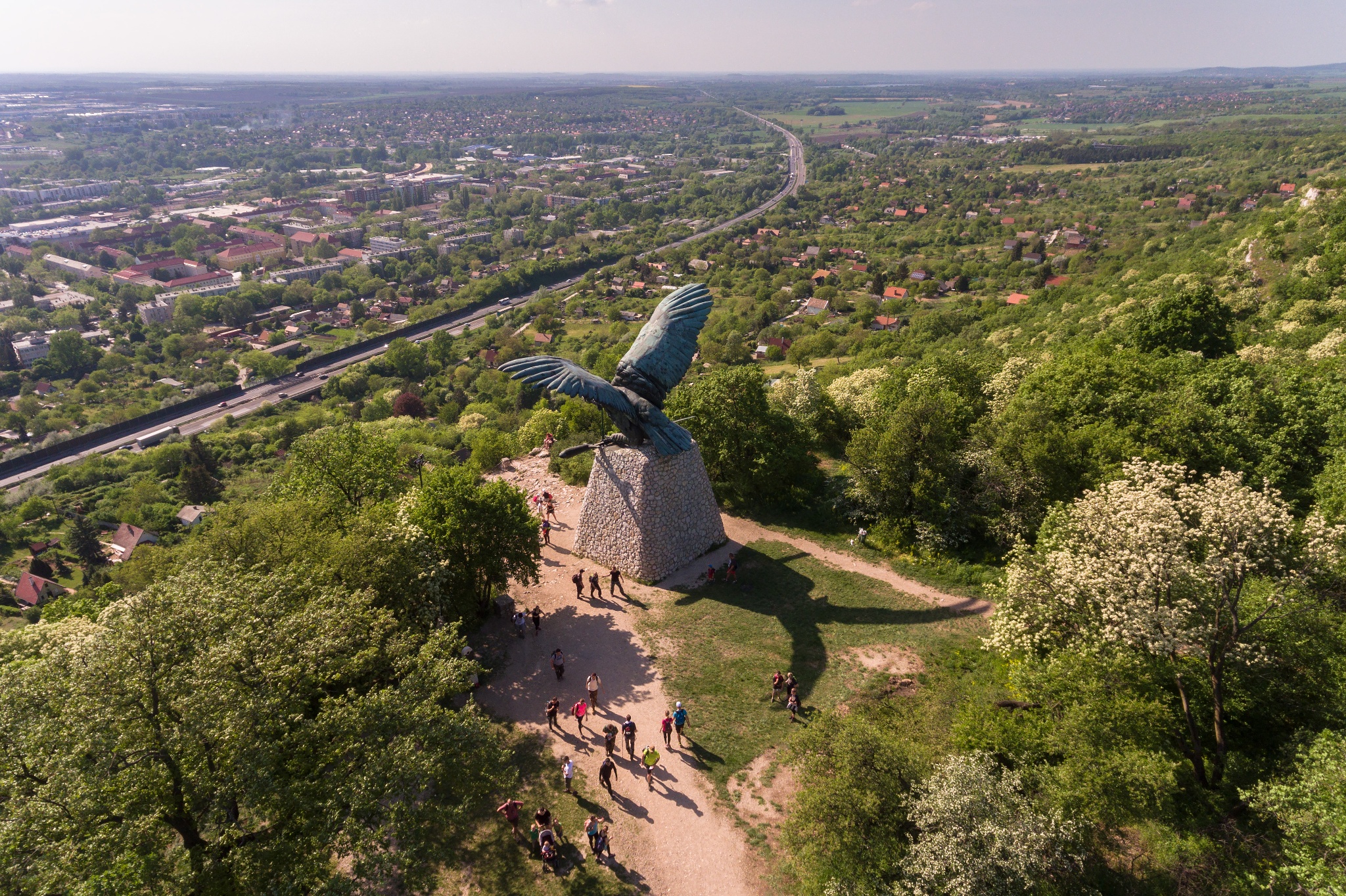Legend of the Turul – Tatabánya – Turul Monument
Fact of the Hungarian figure „Myth of the Hungarian land-taking – Ópusztaszer”
Part of the „The story of the beginning” topic
The Turul is a mythological bird of prey, often depicted as a falcon or eagle, and is one of the most significant symbols in Hungarian mythology and national identity. The legend of the Turul is deeply embedded in the origins of the Hungarian people. According to the myth, the Turul appeared in a dream to Emese, the wife of a leader of the early Hungarian tribes, and foretold the birth of their son Árpád, who would lead the Hungarians to their new homeland. This bird is often seen as a divine messenger and protector of the Hungarian nation.
The origins of old dynasties are obscure, and it is not uncommon for them to be traced back to animals. It appears with the 6th century Turks in Inner Asia and Genghis Khan as well. The totemistic origin of the Árpád dynasty is preserved in two sources: Anonymus’s chronicle from the early 13th century and the 14th century chronicle. According to Anonymus, in 819 Ügyek married Emese, with whom he fathered a son named Álmos.
The pregnant woman was visited in her sleep by the Turul, who impregnated her and told her that she would give birth to glorious kings, who would multiply in a distant land. The original legend shows that the Árpáds considered the Turul (the falcon in old Turkic) their ancestor. This belief persisted even after the adoption of Christianity. The chronicle of Simon of Kéza considers the Árpáds to be descended from the blood of the Turul (de genere Turul).
Their miraculous origin legitimised them to rule over the people. Although the legend and the Hungarian chronicles name Álmos as the first prince, the dynasty was named after Álmos’ son, the House of Árpád. This has no medieval antecedents; the 18th century Hungarian research decided on the name since Constantine VII Porphyrogenitus called Árpád the first prince, and since the Merovingian and Carolingian dynasties were also named after the son of the first ruler.
One of the most prominent representations of the Turul is the monument in Tatabánya, Hungary. Erected in 1907 to commemorate the thousandth anniversary of the Hungarian conquest of the Carpathian Basin, the Turul Monument in Tatabánya is perched majestically atop the Gerecse Mountains. It stands as a powerful reminder of Hungary’s storied past and its enduring cultural legacy. The statue, made of bronze, is one of the largest bird statues in Europe and symbolizes strength, freedom, and the enduring spirit of the Hungarian people.





